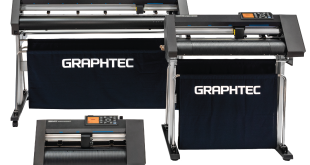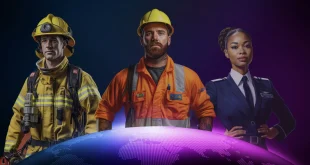 Offices up and down the country are increasingly introducing dress down Fridays which seemingly encourages a more relaxed working environment. But can dressing down still be a uniform? P&P editor Melanie Attlesey finds out.
Offices up and down the country are increasingly introducing dress down Fridays which seemingly encourages a more relaxed working environment. But can dressing down still be a uniform? P&P editor Melanie Attlesey finds out.
A recent survey of 2,000 British workers carried out by Travelodge found that only one in 10 employees now wears a suit to work.
The survey found the modern British office is more likely to be staffed by professional men dressed in jeans or chinos, long-sleeved button shirts and a smart blazer or jacket.
Travelodge carried out the in depth survey into the modern office dress code after hotel managers reported a decline in the number of ties, cufflinks, tie pins and suits being left behind.
Professor Karen Pine, psychologist at Hertfordshire University, said: “Over the last three decades, we have experienced a big movement in the workplace, where traditions and protocols have fallen enormously.
“The biggest changes have included the decline of the hierarchy, the boss being less of an authoritarian figure and more of a coach, all colleagues being called by their first name and the biggest change, the transition from a formal dress code to a casual one.
“Having a dress down Friday every day enables workers to be independent, and showcase their personality and attributes by how they dress rather than the position they hold, which leads to stronger bonds between co-workers and removes barriers, enabling everyone to get on with their jobs.”
This casual trend is even filtering through into the House of Commons. In June last year, John Bercow, Commons Speaker, allowed MPs to dispense with wearing neckties in the House of Commons ending longstanding convention. So are we seeing the end to formal suiting?
Ed Grigg, general manager of Incorporatewear, one of Europe’s leading corporate clothing suppliers, says: “I am always telling our customers and potential customers about the importance of uniform and corporate clothing in reflecting the image, brand and identity of an organisation. However, if such a traditional establishment like the House of Commons is relaxing its dress code then what does that mean for the rest of us?”
The move to uniform casualisation has been around for a few years now and there is no reason why a less formal uniform can’t reflect the image and brand as well, if not better, than a formal look.
Ed continues: “When I started working in the corporate clothing sector, uniform and workwear was always several years behind high street fashion. Today it goes hand in hand and I hope some day soon it will lead it. That is why it is important in our business to have a fresh and enthusiastic design team passionate about fashion and why we have placements for fashion and textile graduates throughout the year.”
But as for dress code? Ed says for him it is all about what is appropriate. For example, someone wearing an artisan style apron with a checked shirt with the sleeves rolled up is a fantastic look in a coffee shop or gastro pub. There is absolutely no reason why that person can’t be a brand ambassador. But how would you feel about someone with that look selling you a mortgage, driving your train, flying your plane or testing your eyes for example?
At the end of the day this trend towards informality doesn’t actually get away from the traditional business emphasis on appearance and presentation. It simply replaces one uniform with another that is, in its own way, just as preoccupied with appearance.
So fear not garment decorators, you will still be seeing those corporate orders come in because in some instances the traditional suited and booted look still rules the roost.
Top five items men would not wear in the modern workplace
-
- Tie
- Trouser braces
- Waistcoat
- High-waisted trousers
- Pocket square
Top five items women would not wear in the modern workplace
- A skirt suit
- Shoulder pads
- A pinafore
- Hair bow
- Mary Jane shoes
 Printwear & Promotion The Total Promotional Package
Printwear & Promotion The Total Promotional Package




